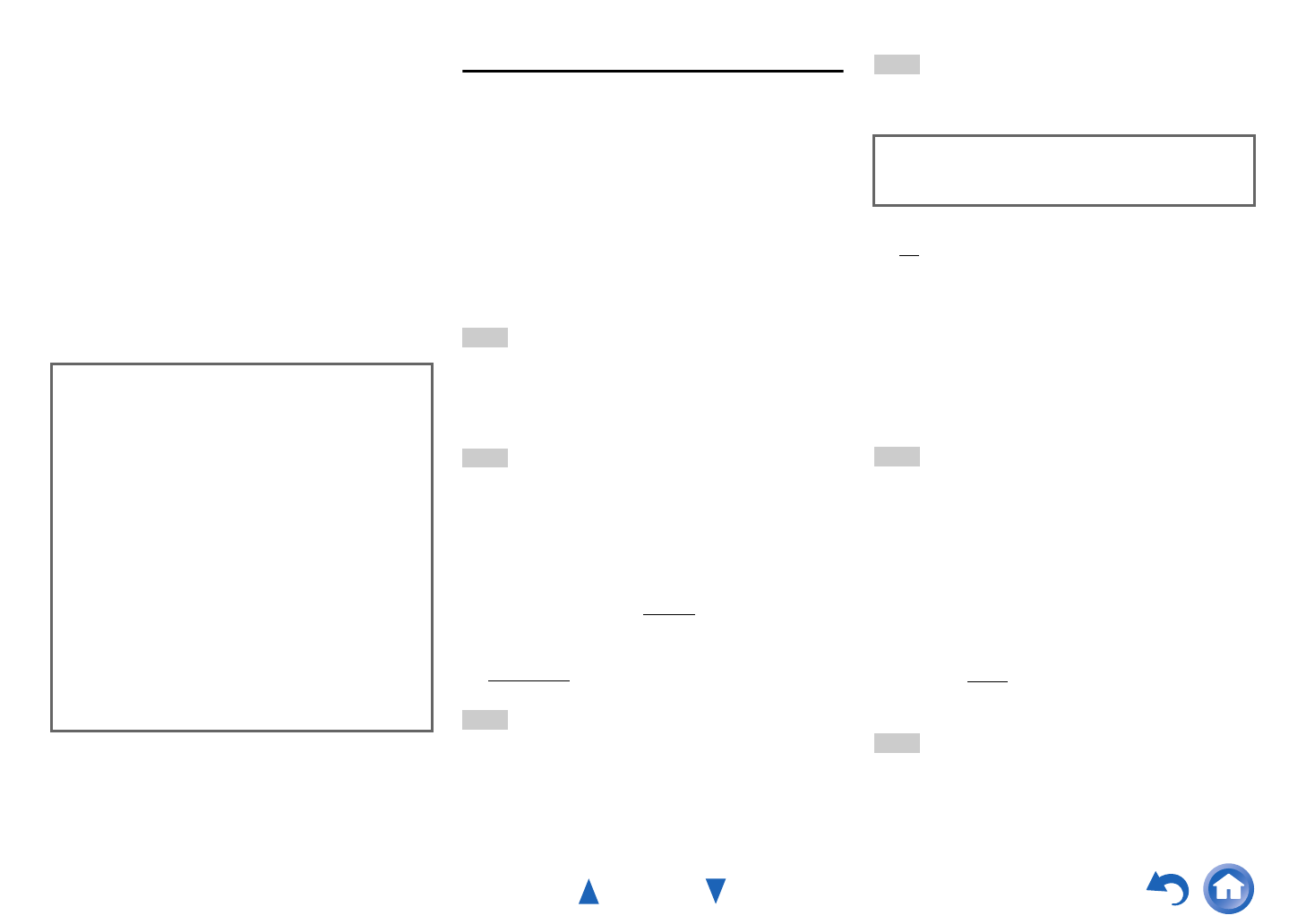
Advanced Operations
En-71
The HDMI connection in your system is used to deliver
uncompressed digital audio and video information from
one device to the next. There is also additional information
about this digital content that can be delivered. Such
additional information is referred to as “metadata”.
Metadata Compatible mode should be used when there are
home theater components in your system, such as Blu-ray
disc players, set top boxes and displays that use this
additional metadata. For example, Metadata Compatible
mode should be set to ON when there are THX Media
Director™ Enabled devices in the system. This ensures
that this additional information can be received by your
Onkyo AVR and can be sent to other devices that are
connected in your home theater system, with no
interruption.
Digital Processing Crossover Network
Digital Crossover provides a separate routing system by
splitting the audio signal into separate frequency bands
optimized for each speaker driver. It provides a fine, three-
dimensional sound field that extend each driver’s
performance to the uppermost. With its built-in time
alignment function, this system also adjusts the sound
shifting that occurs when there is a physical offset between
sound drivers. At a digital processing level, it corrects this
offset by delaying the related audio signal.
Although this function is meant for speakers without
crossover network, it can also be used with bi-amped
speakers.
Tip
• This setting can be done while listening to an audio source.
• Press MODE/D (Blue) to switch from the current audio source to
test noises. Pressing MODE/D (Blue) again or the cursor buttons
will stop the test noises and switch back to the original audio
source.
Note
• This setting can only be made when “Speakers Type(Front A)”
or “Speakers Type(Front B)” is set to “Digital Crossover”
(➔ page 66).
■ Crossover
`“250Hz”, “320Hz”, “400Hz”, “500Hz, “630Hz”,
“800Hz”, “1000Hz”, “1250Hz”, “1600Hz”,
“2000Hz”, “2500Hz”, “3200Hz
”, “4000Hz”,
“5000Hz”
Output Band for Test
`High + Low
, High, Low:
Select the output for the audio signal.
Tip
• Pressing MODE/D (Blue) button plays band-limited test noises
which center on the specified frequency.
• We recommend choosing a crossover value that creates no
volume difference between “High” and “Low”.
Note
• Refer to your speaker manual when setting without the use of test
noises.
■ Overlap
`No
`Yes
With this setting, a frequency band near the specified
crossover frequency is output by both tweeters and
woofers. Based on the frequency selected for “Crossover”,
the cutoff frequency of the low-pass filter (LPF) will be set
to 1/3 octave up and that of the high-pass filter (HPF) to
1/3 octave down. Example: With a “Crossover” of
“3200Hz”, the cutoff frequency of the woofers’ LPF will
be “4000Hz”, and the tweeters’ HPF will be “2500Hz”.
Tip
• Sounds processed by Digital Processing Crossover Network are
played.
• You can switch from the current audio source to test noises by
pressing MODE/D (Blue).
• In the case of usage of the bi-amped speakers, if there is a
difference between the crossover frequency in the speakers’ built-
in network and the crossover frequency to be set on the AV
receiver, the frequency dip may be caused. Therefore, it is
recommended that this function should be set to “Yes”.
■ High Level, Low Level
`–6.0dB to 0.0dB
to +6.0dB in 0.5 dB steps.
With this setting, you can set the volume of tweeters and
woofers.
Tip
• Sounds processed by Digital Processing Crossover Network are
played.
• You can switch from the current audio source to test noises by
pressing MODE/D (Blue).
THX Loudness Plus
THX Loudness Plus is a new volume control technology
featured in THX Ultra2 Plus™ and THX Select2 Plus™
Certified receivers. With THX Loudness Plus, home
theater audiences can now experience the rich details in a
surround mix at any volume level. A consequence of
turning the volume below Reference Level is that certain
sound elements can be lost or perceived differently by
the listener. THX Loudness Plus compensates for the
tonal and spatial shifts that occur when the volume is
reduced by intelligently adjusting ambient surround
channel levels and frequency response. This enables
users experience the true impact of soundtracks
regardless of the volume setting. THX Loudness Plus is
automatically applied when listening in any THX
listening mode. The new THX Cinema, THX Music, and
THX Games modes are tailored to apply the proper THX
Loudness Plus settings for each type of content.
Cutoff frequencies of the woofers’ low-pass filter (LPF)
and the tweeters’ high-pass filter (HPF) are set according
to the frequency specified for “Crossover”.


















